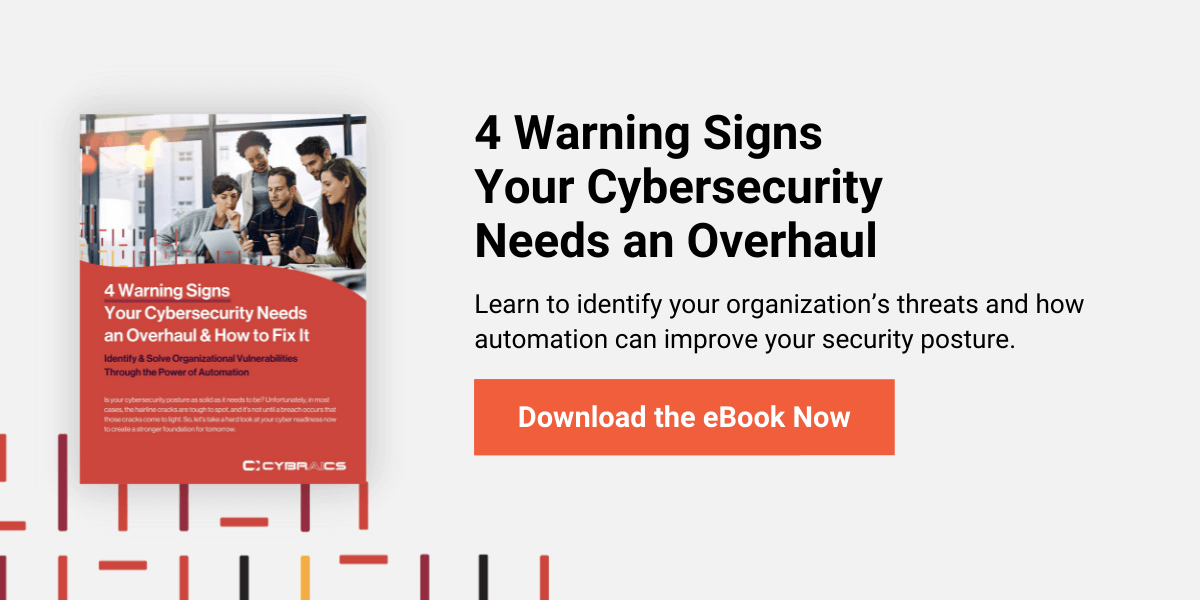Unmet expectations are the cause of many of the world’s problems. If you expect one thing, but something else happens – that gap alone is a problem. This especially applies to things we buy.
Ever have buyer’s remorse about a cyber tool that the sales rep promised would revolutionize your security?
Believe us; you are not alone! Here are a few reasons your cybersecurity tools just aren’t living up to your expectations:
1. You’ve got too many tools.
Why do we keep buying more cybersecurity tools? The average enterprise deploys 45 different cybersecurity-related tools. But in many cases, more tools only hinder your security posture instead of elevating it.
Many cybersecurity professionals end up with more stress because they have too many tools to manage. Beyond the personal impact, too many tools can contribute to lower effectiveness in defending the systems from cyberattacks, according to IBM’s Cyber Resilient Organization Report. That same report found that organizations with more tools rank their “ability to detect threats” lower than those with fewer tools. Classic alert fatigue; you simply have too much threat data to analyze, and skip alerts.
2. The setup and proper configuration of your tools take much longer than expected.
The sales rep assured you repeatedly that connecting their tool with your current tool stack would be a breeze. But now that you’ve started the process of integrating it, you realize that isn’t the case. Too many cyber tools don’t play nice with the rest of your security stack.
A few weeks turn into months, and the horror stories become a reality when it’s a year later, and you can’t get the results promised. See - expectations again. Constant, often costly customization, baselining, and troubleshooting are how you spend your days. The simplicity and ease of use aren’t there, but you’ve invested so much blood, sweat, and tears that you now have to make it work.
3. To run your cybersecurity products, you need experienced staff.
Do you need certification to run your security tool? If so, you might want to check your contract terms. Cybersecurity isn’t something anyone off the street can walk in and be an expert at; you will always need experienced, intelligent, hard-working security experts. But the massive shortage of cybersecurity experts on the market means that it is not easy to staff your team, and experts tend to be very expensive.
The expertise required to run some of these security products makes it necessary to have highly qualified, if not formally certified, staff.
Add up the employees’ salary responsible for the new tool and the time invested in the setup and management. You might find that cybersecurity product that looked so affordable initially ends up costing you much more than anticipated.
4. Some cybersecurity products require additional tools.
Most of the time, if you want a new cybersecurity product to work, you need to install additional tools — something most providers don’t always disclose upfront. Make sure you take a close look at the system requirements. You might find some items that don’t work well or integrate smoothly with the rest of your environment. It’s not just the cost of the extra tools, it’s the time spent and potential impact on your security posture that you need to evaluate.
Remember the last time you fell in love with a feature, only to find out it required an upgrade? Again, expectations were set and not delivered.
Your security only works properly when you can trust the results.
The solution - get something that works.
The reality is that cybersecurity needs a fundamentally different approach than the one we have today. Bad actors use increasingly sophisticated tactics and tools, yet we’re supposed to cobble together a complex security stack and fill every potential gap in our security posture?
Automation is the answer — from data collection to logs and alerts. Automation does the heavy-lifting, research and correlation of threats to identify and prioritize what needs remediation now while mitigating the false positives.
Want to learn more? Download your free 4 Warning Signs Your Cybersecurity Needs an Overhaul & How to Fix It eBook to help you identify vulnerabilities and the best ways to address them.

